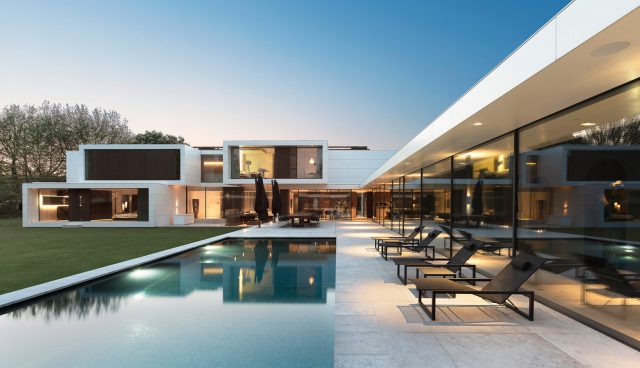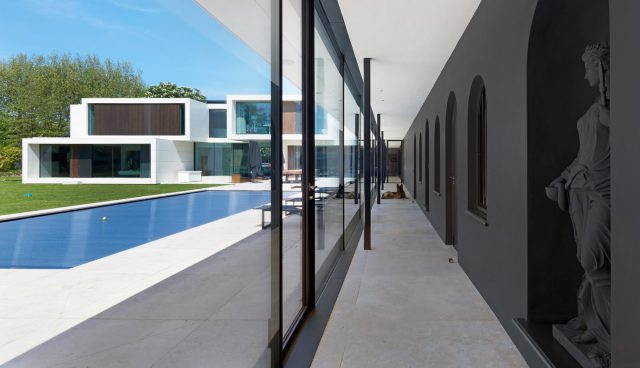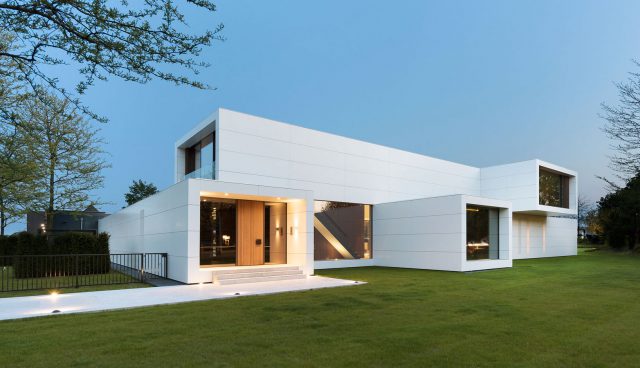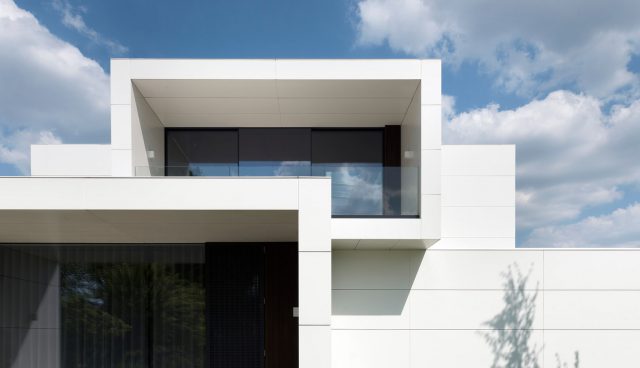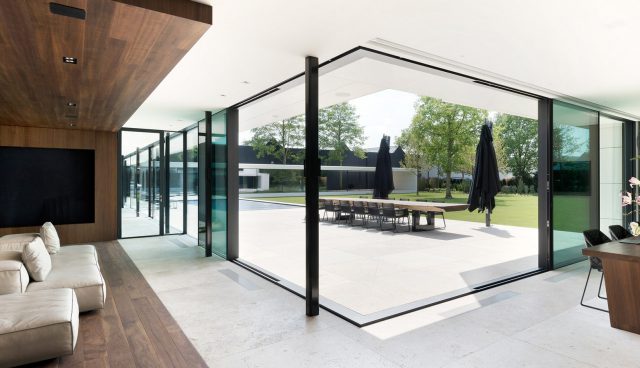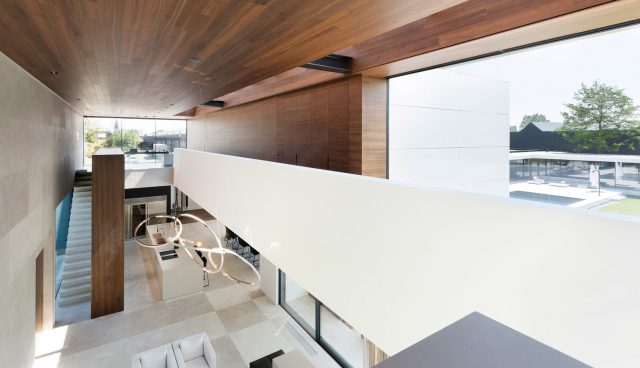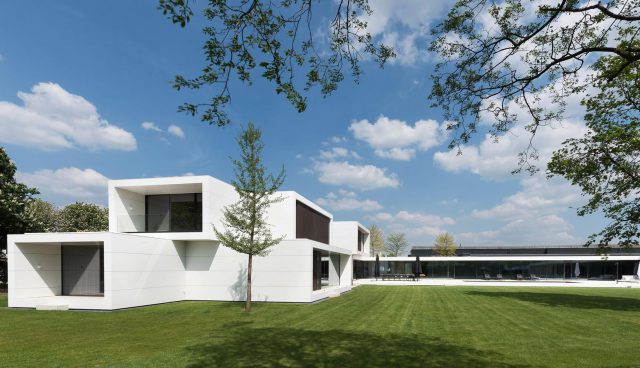Villa D
The Netherlands
Villa D
The Netherlands
The design of Villa D, located in a three-acre garden, follows the outlines of the former residence, which was demolished to make place for the new house. The plan divides the garden into two sections: an intimate area for the residents, and an adjacent open area that follows the path of a small village road.
The main part of the house has two levels, which are connected by a large central space — created by pushing individual rooms outward. On the ground floor, this space contains the living room, which has large windows that connect it with both the inner and outer gardens. The light gray travertine stone wall and floor extend onto the main terrace outside, with a swimming pool. The interior of the upper floor is characterized by the dark wood floor and ceiling. Large windows at the end of the elongated space create a visual extension with the garden.
A series of spaces connected by a long corridor expand the house, from the main area around the inner garden, into a private spa. One small remain segment of the old house, in neo-Romanesque style, provides a subtle contrast with the modern design of the new residence. The walls, including the statues set into niches, are painted black. The external design is dominated by boxes protruding out from the main volume, with walls framing the large windows clad in matt white Corian.

